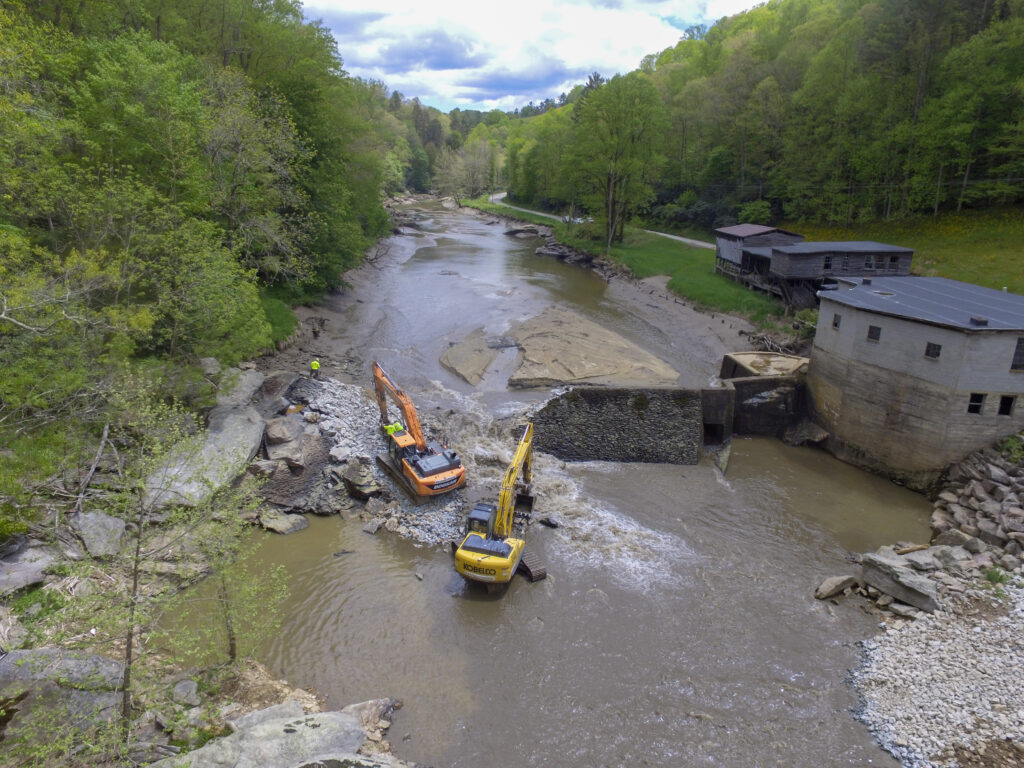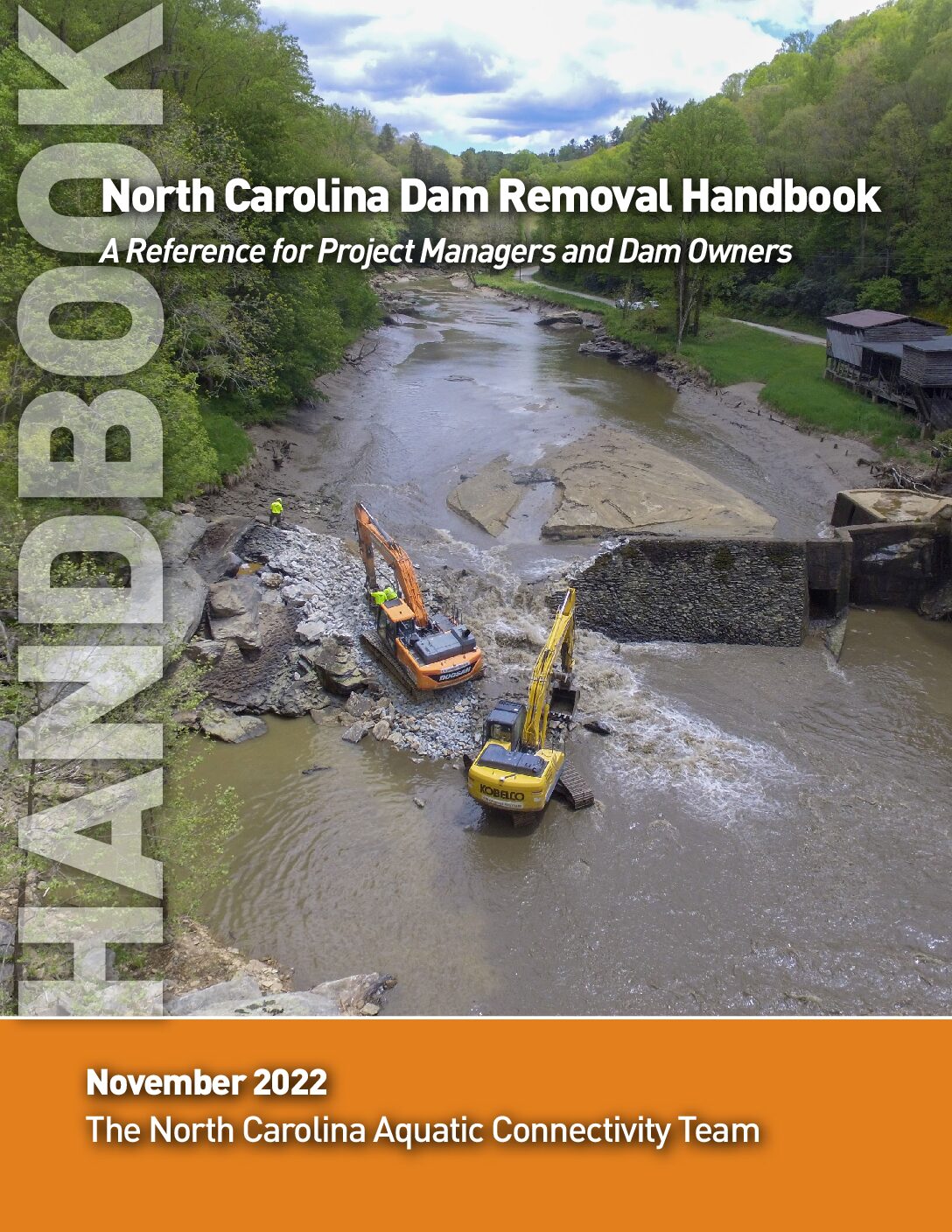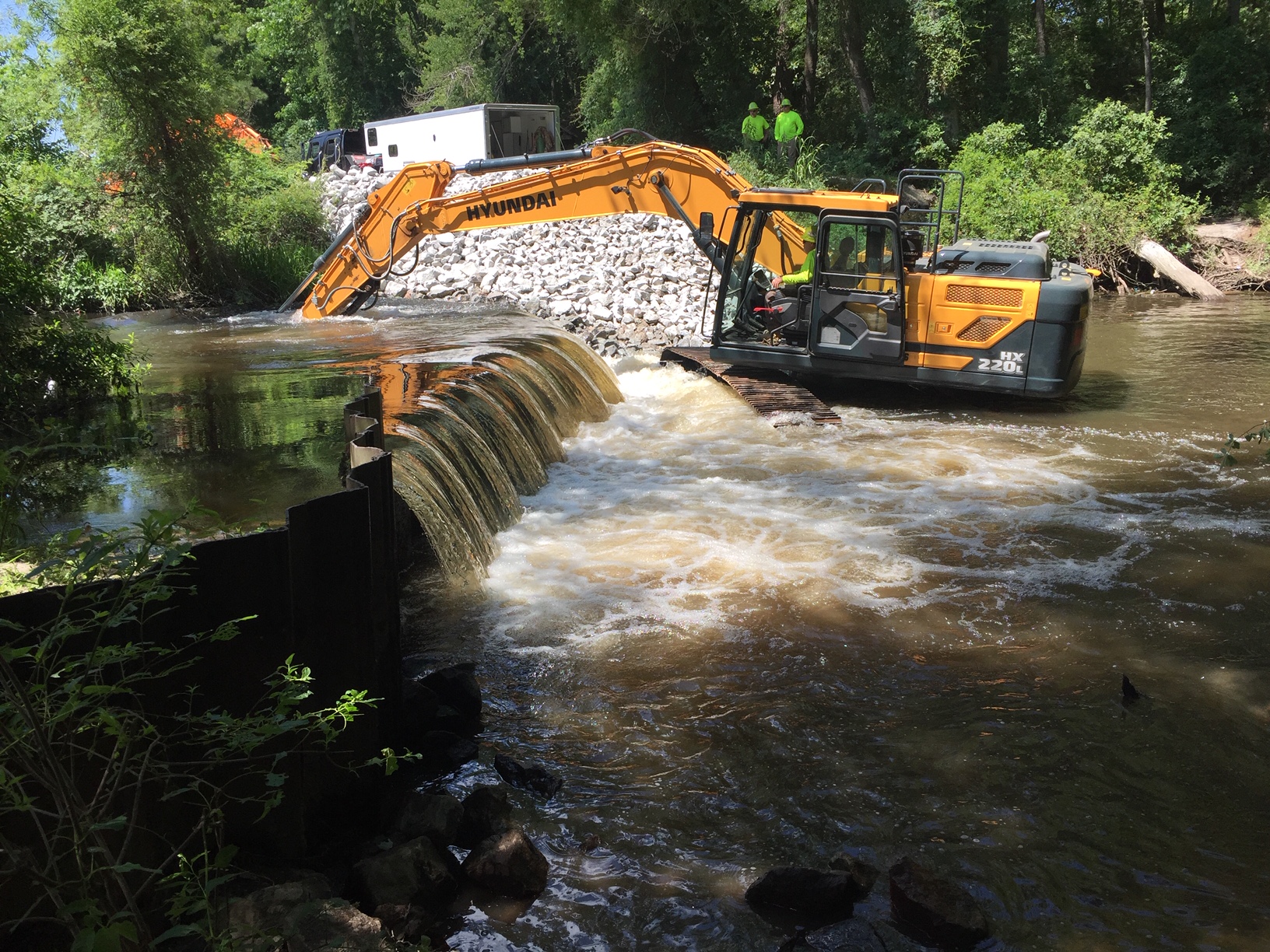North Carolina Dam Removal Handbook

North Carolina’s rivers are the lifeblood of its communities, providing fresh, clean water for life to thrive. Dam building, pollution, development, and other impacts have stressed or impaired many aquatic communities that depend on NC rivers and streams. Few things have such a fundamental impact on a river as a dam. While some of the more than 26,000 dams currently spanning North Carolina’s waterways provide important services, many are either obsolete or offer benefits that no longer outweigh their costs. Dams obstruct waterways, pose public safety hazards, harm Tribal Nations’ cultural values, prevent aquatic life from accessing essential habitat, impact water quality and flow, limit recreational and economic opportunities, and can increase flood risk and greenhouse gas emissions.
Dam removal is one of the most efficient ways to restore streams and stream functions; it immediately opens access to the habitat above the site of the former dam and restores natural sediment and nutrient flow downstream. Dam removal also builds resiliency to combat the impacts of climate change that are stressing freshwater resources and communities in North Carolina. Increasing climate variability and volatility will continue to increase the frequency and severity of extreme storms, floods, and droughts. North Carolina has seen these effects with significant rainfall and flooding associated with hurricanes and tropical storms in 2016, 2018, and beyond. Dam removal mitigates these impacts of climate change by restoring natural flow and water temperature regimes, restoring floodplains, and allowing aquatic species to migrate to climate refugia where conditions better meet their needs.



